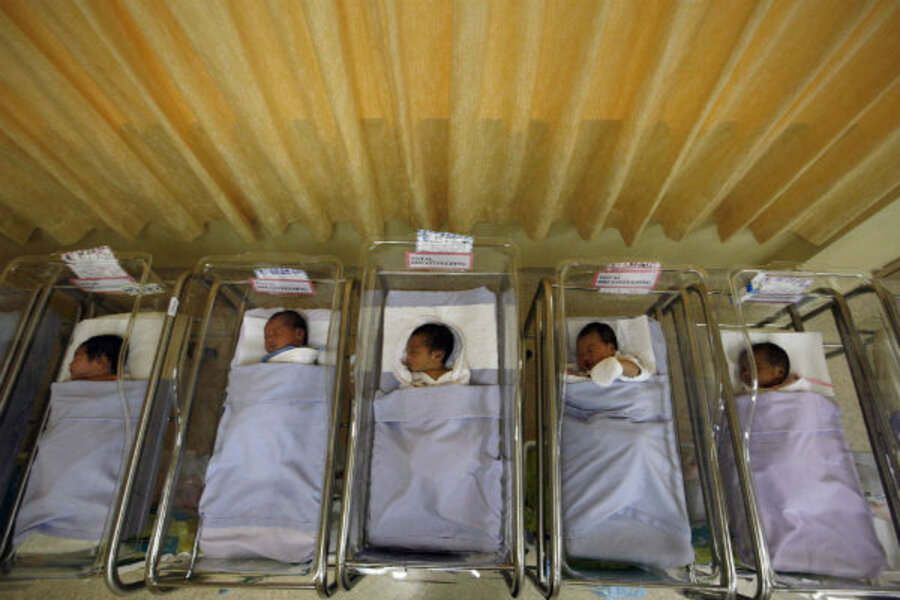Infant sleep training news: 'Cry it out' does no harm
Loading...
Ah, sleep training. Forget mommy wars and the pros and cons of extended breastfeeding. Forget, even, the presidential campaign and those questions about the role of government or the health care law. If you want to get new parents riled up and arguing – if, that is, they’re not too tired – drop the “cry it out: pro or con?” bomb and see what happens.
There’s a study published online in the journal “Pediatrics” today that shines some new light on this emotional debate. (And let me tell you, debates get all sorts of emotional at 3 a.m. when you’re wondering how the toddler can be fast asleep in your arms and then snap suddenly awake as soon as you rest her in her crib.)
But before getting into these new findings, some context:
For those of you who do not have babies, or who have simply blocked out those first two years of bedtime battles and 2 a.m. sniffles, you might not recognize the desperate dominance of the “how the heck do I get this kid to sleep” question. But not only does this quandary have a direct impact on parents’ health, work, relationship, and quality of life (just try functioning with a daily fear of three-hour bedtime routines and multiple wake-ups during a too-short night’s sleep), it seems that everyone out there has an opinion about how to get baby sweetly into dreamland.
Grandma says to let the baby cry until he falls asleep – no point in teaching him that you’ll come back if he just cries longer. Your best friend counters that this “cry-it-out” technique is barbaric, and you should instead take baby into bed with you – after all, this is how its been done for centuries. Neighbors, child development experts and pediatricians suggest everything in between, from the graduated sleep training method (coming back to comfort a crying baby, but letting her cry at gradually longer intervals before intervening) to the “camping out” technique, where you sit in a chair while the baby goes to sleep, gradually moving it further and further away until you are out of the room and the little tot falls peacefully to sleep all by herself.
And then there’s that oh-so-helpful friend who says she doesn’t know what the fuss is about; her child figured out how to go to sleep easily and has been snoozing through the night ever since he was five months old. (To this friend – please, stop sharing. Really.)
Meanwhile, everybody points to research showing that their way is the best, and that other techniques lead to deep emotional, psychological, and potentially even physical problems in children. (Or parents.)
Oh, and if you do this wrong your kid will hate you.
But today, a group of Australian researchers are helping us tired parents out. They published their findings from a longitudinal study of 326 children who were reported by their parents to have sleep problems at 7 months.
The good news: gentle sleep training, at least, does not have a negative impact on children. And, in the short term, sleep training can work to ease difficult bedtimes and night times.
In this study, half of the children were assigned a group where their parents were taught about soothing bedtime routines and two moderate “sleep training” techniques: controlled comforting, where you let babies cry for short amounts of time and respond at increasingly longer intervals, and that “camping out” method. Parents in this group could pick which sleep technique they wanted to use.
The other children were in a control group that did not use sleep training.
Now, 30 percent of the families dropped out of the study by the end of the five year research period. (I’m interested to know more about those folks.) But researchers found that among the children who remained, by the time they were six years old there was no significant difference between the control group and the sleep trained group in terms of emotional health or behavior, and no differences in the mothers’ levels of depression or anxiety. There was no difference in parent-child bonds.
Keep in mind: this study did not evaluate what have been called the “harsher” sleep training methods – in particular, the cry-it-out “extinction” method, in which the parent simply leaves a child to cry until he or she is asleep. Some sleep experts have called this method kinder than the graduated approach; others have warned that it causes stress and emotional trauma in kids, essentially teaching them that mom and dad won’t come to help.
That debate can continue.
RELATED: 5 top childcare options - value and cost, from nanny to day care.
Meanwhile, another tidbit from the research: sleep training, the scholars found, does work in the short term to help babies fall asleep more quickly and sleep longer at night. But in the long term? There’s no difference in the level of sleep problems among children who have had sleep training and those who haven’t.
A potential lesson in this for the sleepy parents: It will all be OK. Really.
Just try to keep that in mind at 3 a.m.








